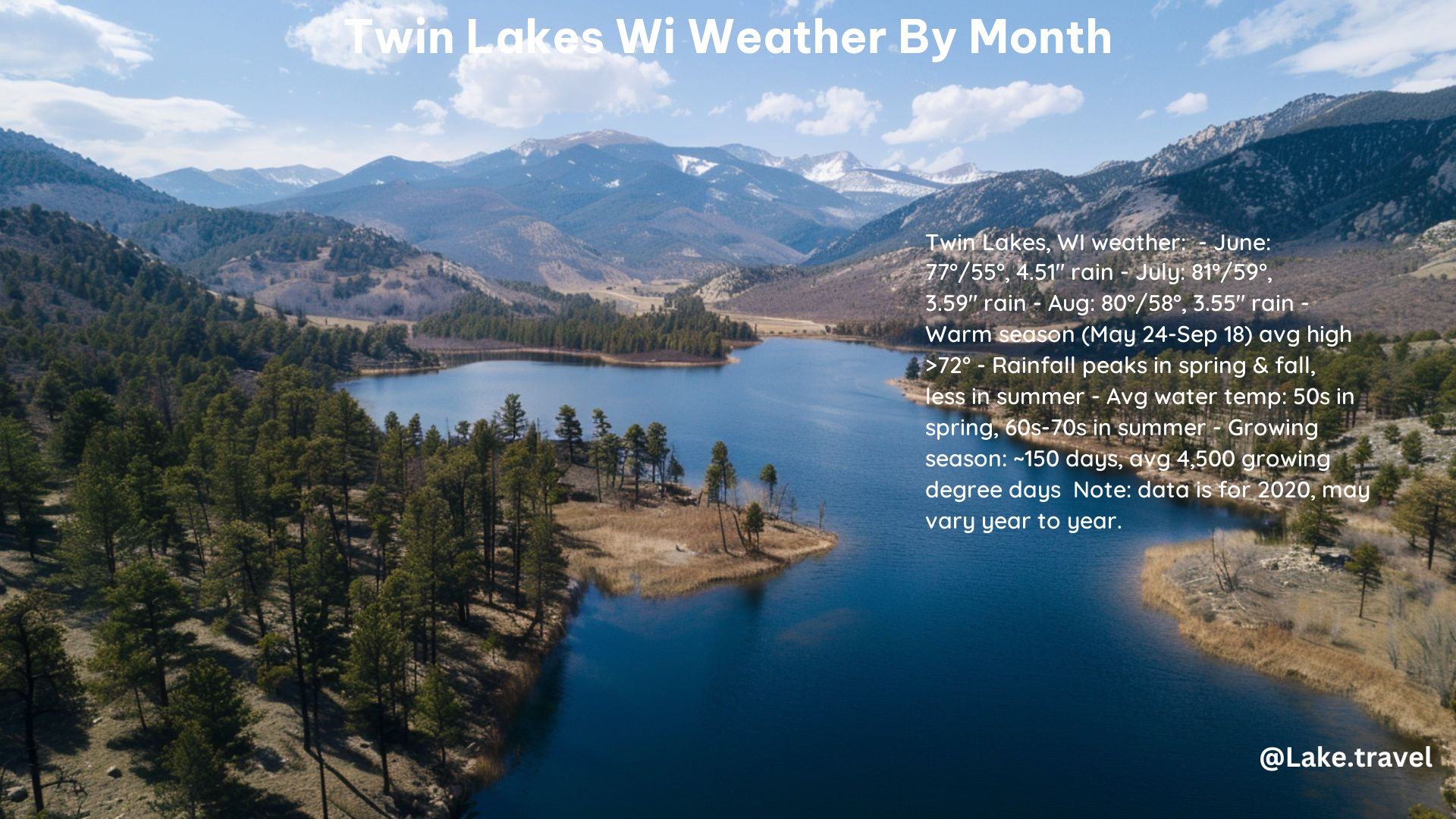Twin Lakes, Wisconsin experiences a diverse range of weather conditions throughout the year, making it a popular destination for lakes touring enthusiasts. From the warm and sunny summer months to the chilly and snowy winters, this picturesque region offers a unique and ever-changing landscape for visitors to explore.
The Warm Season: May to September
The warm season in Twin Lakes lasts for approximately 3.8 months, from May 24 to September 18, with an average daily high temperature above 72°F. This is the prime time for lake activities, as the average water temperature during this period is around 75°F.
May and June
- May: Average high of 64°F and low of 42°F. Rainfall is moderate, with an average of 3.9 inches.
- June: Average high of 75°F and low of 53°F. This is the wettest month, with an average of 4.6 inches of rainfall.
July and August
- July: The hottest month, with an average high of 81°F and low of 59°F. This is the peak of the tourist season.
- August: Average high of 79°F and low of 57°F. Rainfall starts to decrease, with an average of 3.8 inches.
September
- September: Average high of 71°F and low of 48°F. The weather starts to cool down, but the lake activities remain popular.
The Cool Season: November to March

The cool season in Twin Lakes lasts for approximately 3.2 months, from November 29 to March 4, with an average daily high temperature below 44°F. This is the time of year when the area experiences its coldest temperatures and snowfall.
October and November
- October: Average high of 60°F and low of 39°F. Rainfall decreases, with an average of 3.1 inches.
- November: Average high of 46°F and low of 29°F. Snowfall begins, with an average of 5.1 inches.
December, January, and February
- December: Average high of 34°F and low of 19°F. Snowfall increases, with an average of 9.1 inches.
- January: The coldest month, with an average high of 26°F and low of 12°F. Snowfall is at its peak, with an average of 10.2 inches.
- February: Average high of 32°F and low of 15°F. Snowfall remains high, with an average of 8.4 inches.
March
- March: Average high of 41°F and low of 24°F. Snowfall starts to decrease, with an average of 6.1 inches.
Precipitation and Snowfall
Twin Lakes experiences a significant amount of rainfall throughout the year, with an average of 35.28 inches per year. The wettest month is June, with an average of 4.6 inches of rainfall, while the driest month is February, with an average of 1.5 inches.
In terms of snowfall, Twin Lakes receives an average of 43.7 inches per year, with the most snowfall occurring in January and February.
Tourism and Outdoor Activities
The best time of year to visit Twin Lakes for warm-weather activities is from May to September, with the peak tourist season occurring in July and August. During this time, the beach/pool score is highest, indicating optimal conditions for water activities.
For those interested in winter activities, Twin Lakes offers opportunities for snowshoeing, cross-country skiing, and ice fishing. The area’s snowy winters make it a popular destination for outdoor enthusiasts.
Conclusion
When planning a trip to Twin Lakes, it is essential to consider the weather conditions and plan accordingly. The area can experience extreme temperature fluctuations and sudden changes in weather, so it is always recommended to check the local weather forecast before engaging in outdoor activities.
References:
– Weatherspark – Twin Lakes Climate, Weather By Month, Average Temperature
– Weather.com – Monthly weather forecast for Twin Lakes, WI, United States
– Weather.com – Monthly Weather Forecast for Twin Lakes, WI
– Wunderground – Twin Lakes, WI Weather History
